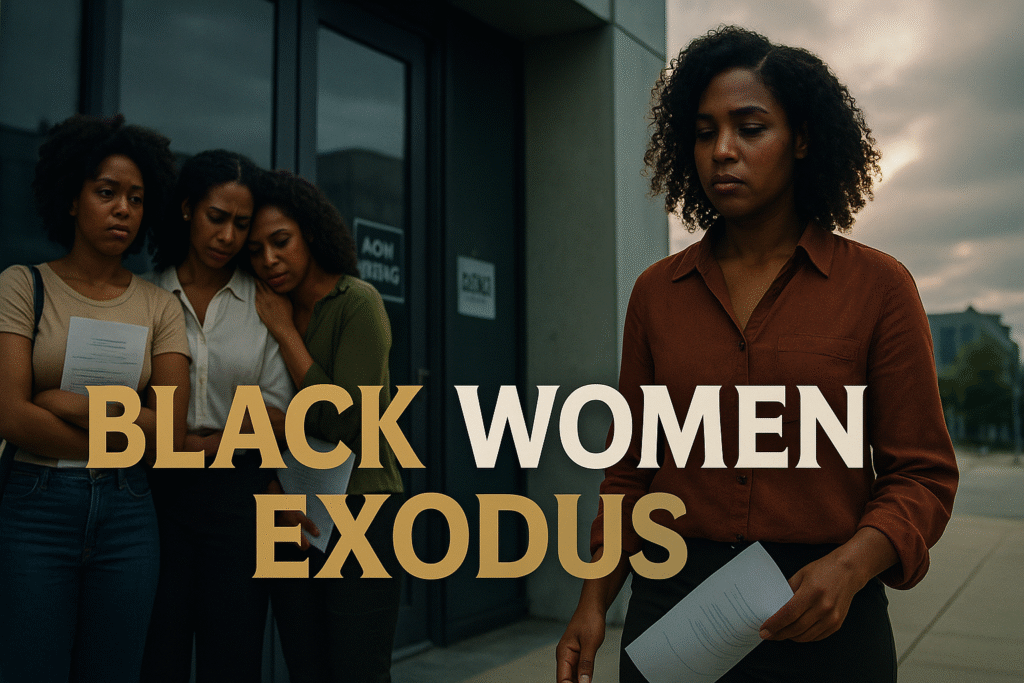

Black women unemployment analysis: workforce exodus and policy implications
By Darius Spearman (africanelements)
Support African Elements at patreon.com/africanelements and hear recent news in a single playlist. Additionally, you can gain early access to ad-free video content.
Introduction: August 2025 unemployment news and Black women’s labor market experience
In August 2025 the jobs headlines carried a stark number: Black women’s unemployment rose to about 6.7 percent. Since then policy teams, advocacy groups, and lawmakers across the Black policy ecosystem have framed the figure as a symptom of deeper structural problems. Moreover, the statistic has launched urgent debate about federal responsibility in protecting jobs, caregiving supports, and equitable hiring practices. As an African Diaspora reader, the number signals both present harm and an historic pattern of labor exclusion that affects families, communities, and long‑term wealth creation.
In the following sections I unpack the current numbers, explain historical roots of disparity, and show why the trend matters now. I include direct source attributions tied to each major point so readers can see the underlying reporting and policy briefs.
Detailed analysis of the current news story: Black women unemployment 6.7% and immediate causes
Since late summer 2025 Black women’s unemployment was reported at approximately 6.7 percent, more than twice the rate for white women. Analysts and advocacy groups linked the spike to multiple, overlapping causes. For example, reductions in federal hiring and a wave of job cuts in public administration disproportionately affected occupations where Black women are overrepresented; advocacy statements connected those federal workforce shifts to the sudden uptick in joblessness among Black women (CLASP).
In addition, caregiving burdens and unaffordable childcare pushed many mothers to scale back or leave paid work. Analysts emphasized that return‑to‑office mandates and shrinking workplace flexibility in 2025 created a choice for working mothers between lost caregiving capacity and lost pay. Those dynamics hit Black women because they are more likely than white women to hold jobs with less flexibility and to shoulder unpaid caregiving responsibilities (Joint Center).
Finally, the retreat from explicit diversity, equity, and inclusion programs in many companies removed pipelines and supports that had helped Black women obtain and retain positions. Industry commentary and first‑person accounts documented budget cuts to DEI efforts and reduced demand for diversity consultants—changes that correlate with deteriorating hiring and advancement for Black women (Medium).
Historical context: systemic barriers shaping Black women’s employment
To understand why a single monthly spike matters, one must see the long arc. Historically, Black women have faced a triple bind in the U.S. labor market: racial discrimination, gender discrimination, and unequal caregiving burdens. Since Reconstruction Black women have been concentrated in service, clerical, and public sector roles—jobs that historically offer lower pay and fewer protections. Consequently, when public sector downsizing or industry disruptions occur, Black women lose jobs at higher rates and face slower recoveries.
Moreover, structural underinvestment in childcare and caregiving supports has repeatedly forced Black women into precarious labor market positions. For decades policy choices—limited public childcare, weak family leave laws, and insufficient job protections—have meant that economic shocks drive Black women out of paid work faster than other groups. Therefore, the 2025 data reflect a long pattern rather than an isolated seasonal hiccup (CLASP).
Additionally, when corporations scale back DEI programs or when federal workforce policies shift, the loss is not simply symbolic. Those programs and hiring practices had been important entry points and retention mechanisms for Black women. Historically, policy gains—civil rights enforcement, affirmative action measures, public sector employment—helped stabilize Black women’s employment rates. When those supports erode, Black women are more vulnerable to layoffs or forced exits from the workforce (Joint Center).
Historical patterns of racial and gender labor inequality and how the 2025 spike fits
Historically, Black women have experienced both higher unemployment and lower wages than white women and men. Consequently, months when unemployment rises for Black women matter more than raw percentages. Over time the effects compound: missed paychecks reduce savings, hinder retirement contributions, and make it harder to recover from future shocks. Therefore, the August 2025 rise should be read as an intensification of structural exclusion rather than a brief statistical blip (Joint Center).
Furthermore, the interaction between public policy and private employer practices creates feedback loops. Public sector layoffs increase unemployment among Black women. At the same time, private employers shrinking DEI practices reduce hiring opportunities. As a result, the labor market becomes less inclusive, and the typical pathways to stable middle‑class employment for Black women narrow (CLASP).
Conclusion: Why the Black women workforce exodus matters today and what is being proposed
The crisis matters because Black women are economic anchors for many families and communities. When Black women lose jobs or leave the workforce, the ripple effects hit children, elders, and local businesses. In addition, wealth and career gaps widen, reversing decades of modest gains. Policy groups are urging federal action including expanded childcare, targeted reemployment programs, stronger anti‑discrimination enforcement, and protections for flexible work so caregivers can remain employed. Lawmakers have asked federal agencies to explain the drivers and to propose remedies that target the specific racial and gender disparities exposed by the August data (Rep. Pressley).
At a minimum, interventions must address immediate job loss and the structural reasons Black women are more vulnerable in economic downturns. Otherwise, the 2025 spike will become another historical setback in a broader trend of inequality. For readers and organizers in the African Diaspora, the policy choice is clear: prioritize caregiving supports and equitable hiring to protect the economic foundations of our communities (CLASP).
ABOUT THE AUTHOR
Darius Spearman has been a professor of Black Studies at San Diego City College since 2007. He is the author of several books, including Between The Color Lines: A History of African Americans on the California Frontier Through 1890. You can visit Darius online at africanelements.org.
